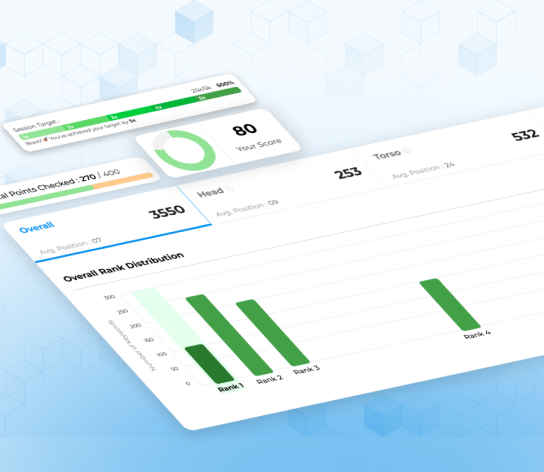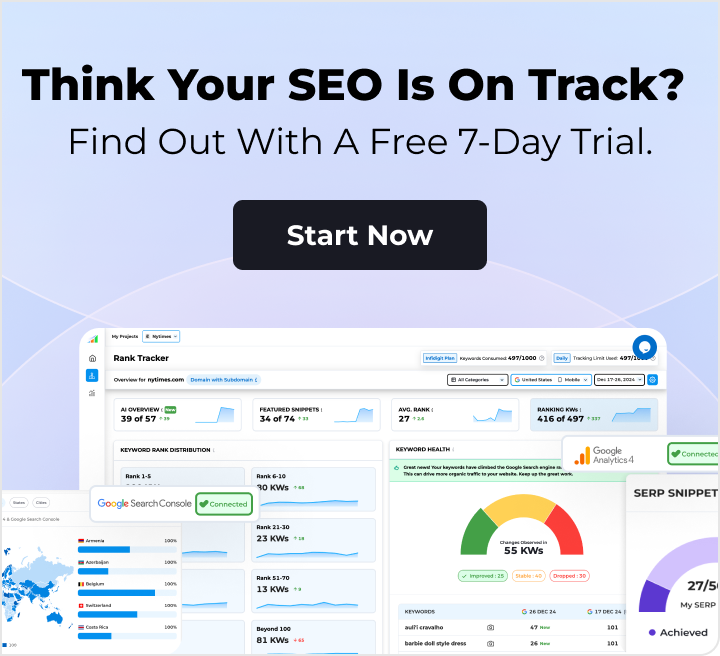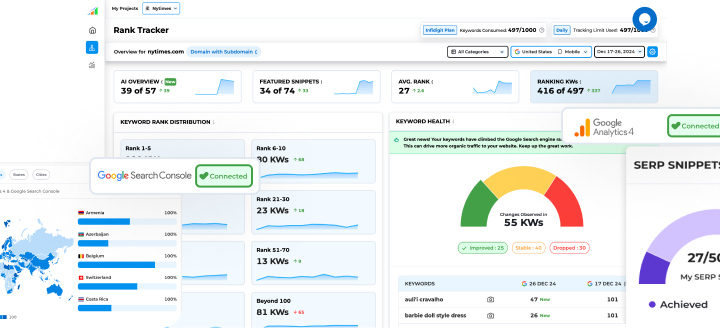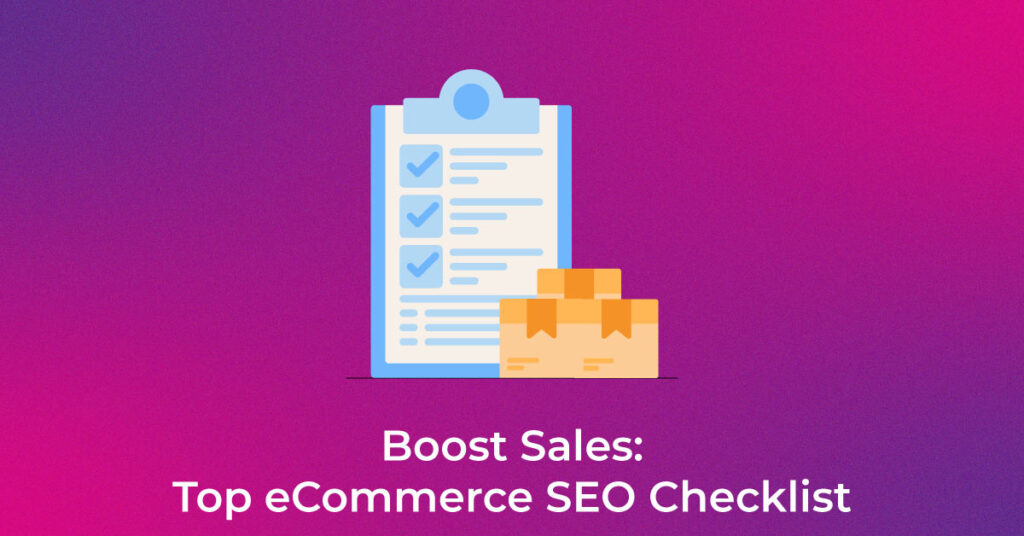Essential Components of Your Ecommerce SEO Strategy
Understanding the Importance of SEO for Ecommerce
In today’s digital marketplace, SEO services are crucial for success. By implementing effective SEO techniques, you can enhance your online platform’s visibility and competitiveness. Understanding SEO goes beyond improving search rankings; it also focuses on user experience.
A well-optimized website attracts visitors and offers a seamless browsing experience, fostering customer loyalty. When users can easily navigate your site and find what they need, they are more likely to return and convert into loyal customers. Partnering with specialized e-commerce SEO services can help you achieve these goals efficiently, driving growth and long-term success.
In essence, SEO serves a dual purpose: elevating search visibility while creating a user-friendly environment. This combination is vital for driving conversion rates and ensuring long-term success in a competitive landscape. By prioritizing both visibility and user experience, you position your e-commerce platform to thrive and meet the demands of modern consumers.
Setting Clear SEO Goals and Objectives
To achieve success in SEO, it’s crucial to define your ambitions with precision. Start by establishing clear, realistic goals and measurable objectives tailored to your business needs. Consider what you want to accomplish—whether that’s dominating search results for specific products, increasing organic traffic by a certain percentage, or optimizing product pages to convert more visitors into customers.
Setting these goals not only provides direction but also allows you to track your progress effectively. For example, if your objective is to improve search rankings, you can monitor keyword performance and adjust your strategies based on results. If your aim is to boost traffic, analyze user behavior and engagement metrics to identify areas for enhancement.
Moreover, these goals should be revisited and refined regularly. As market trends and consumer behaviors evolve, your objectives may need adjustment to ensure continuous improvement. By aligning your SEO efforts with clear ambitions, you empower your e-commerce platform to adapt and thrive in the competitive digital landscape. This strategic approach ultimately fosters better user experiences, enhances brand loyalty, and drives higher conversion rates.
Ecommerce SEO Checklist: Your Step-by-Step Guide
Utilize this comprehensive Ecommerce SEO Checklist to enhance your online store’s visibility and improve search engine rankings. Methodically work through these essential Ecommerce technical SEO steps to set your e-commerce platform on the path to success.
By following this guide, you will achieve better search results, create a more seamless user experience, and drive higher sales. Prioritizing these strategies not only boosts your site’s performance but also helps attract the right audience, ultimately contributing to sustainable growth in a competitive digital landscape. Embrace this checklist as a key tool in your SEO strategy to unlock your online store’s full potential.
1. Technical SEO Audit
Check Robots.txt File
Paying attention to your robots.txt file should be a pivotal undertaking in your SEO audit. This file guides search engine bots by specifying which pages should be crawled and which should be skipped, effectively protecting sensitive pages while ensuring that valuable content is indexed.
Review and refine your robots.txt file to prevent search engine bots from accessing irrelevant or duplicated content. Ensure that it isn’t accidentally blocking pages that could contribute positively to your SEO, such as pages with high-value backlinks. Include a link to your sitemap.xml to enable bots to effectively discover all indexable pages.
Submit Sitemap to Google
Generate and submit an XML sitemap to Google Search Console to boost your site’s SEO performance. This sitemap differs from a user-facing HTML sitemap—it’s crafted specifically for search engines. By submitting your sitemap, you ensure Google is informed of all important pages to be considered for indexing. Implementing this step is straightforward: use a sitemap tool to create one, then log into Google Search Console and submit it. This is a critical move for Google to understand your site’s structure and enhance the visibility of your pages in search results.
Ensure HTTPS is Enabled
Ensure HTTPS is enabled on your ecommerce site to encrypt users’ sensitive data and strengthen their trust. HTTPS is not just a security feature; it has evolved into a signal for search engine rankings, with Google indicating a preference for HTTPS-enabled sites. Sites without HTTPS may not only be ranked lower but also risk displaying security warnings to visitors—resulting in potential loss of traffic and sales.
Utilize an SSL certificate for your site to elevate the security of data transfer and transactions. This is a necessary measure to protect against cyber threats and to solidify your site’s credibility and customer trust. Remember, many hosting providers offer SSL certificates as part of their hosting packages, often free for the first year.
Optimize Site Speed
Optimize site speed to create a swift and smooth shopping experience contributing to customer satisfaction and retention. A fast-loading site not only boosts user engagement but also elevates your SEO rankings. Start by deploying tools like Google PageSpeed Insights to diagnose load time issues.
Minifying code, enabling browser caching, using a content delivery network (CDN), compressing images, and reducing server response times are proven ways to fuel your e-commerce website’s performance engine. Remember, when seconds count, even a small improvement in page load time can lead to a notable increase in conversions.
Verify Mobile-Friendliness
Verify mobile-friendliness to ensure you’re capturing the expansive mobile audience effectively. Utilize Google’s Mobile-Friendly Testing Tool, which evaluates your website’s design, structure, and page speed on mobile devices. Furthermore, manually navigating your site on a smartphone can uncover areas requiring improvement, be it navigation, internal search, or product page layouts.
Responsive design is vital as it allows your site to adapt fluidly to different screen sizes, earning favor from Google’s mobile-first indexing. Making your eCommerce platform mobile-friendly is no longer optional; it can dramatically affect your ability to engage customers and finalize sales.
Fix Crawl Errors and Redirects
Fix crawl errors and redirects to maintain a clean bill of health for your ecommerce website. Regularly monitor your site for 404 errors and either fix the broken links or implement 301 redirects to relevant pages to improve user experience and SEO.
Perform a site crawl with a tool like Screaming Frog—if you identify any crawl budget issues or a substantial number of internal errors such as 3xx or 4xx status codes, prioritize fixing these. Additionally, for old URLs that have moved, ensure proper 301 header information is provided to guide both users and search engines to the correct page, minimizing the disruption caused by a 404 Not Found error.
2. Keyword Research
Identify Primary Keywords
Identify primary keywords using a blend of market analysis and SEO tools to create the keystone of your content and optimization efforts. First, analyze your products and services to derive a list of potential keywords. Utilize keyword research tools like Google Keyword Planner or Ahrefs to refine this list based on queries, keyword search volume, and competition.
Focus on identifying those keywords that are highly relevant to your website page and have a substantial search volume but reasonable competition. Ensure that they align with your target audience’s search habits and are likely to drive high-value traffic to your ecommerce site.
Research Long-Tail Keywords
Research long-tail keywords, which are often more specific and less competitive than short, generic keywords. Long-tail keywords can drive targeted traffic that is more likely to convert into sales due to specific search intent. Utilize comprehensive keyword research tools to unearth long-tail opportunities that resonate with your niche and complement your primary keywords.
For instance, instead of “dog food,” target “organic raw dog food for allergies” if relevant to your products. By targeting such keywords with tailored content or specific product pages, you can tackle niches that larger competitors might overlook, ultimately enhancing your site’s visibility and attracting customers ready to make a purchase.
Analyze Competitor Keywords
Analyze competitor keywords to uncover the search terms that are bringing traffic to your rivals’ eCommerce sites. Investigate not just who is outranking you but also which keywords they are capitalizing. Use tools like SEMrush or Moz for insights into competitors’ keyword strategies. This can help you identify gaps in your strategy and potential opportunities for improvement. A keyword gap analysis will enable you to refine your keyword list and potentially capture traffic that your competitors are currently enjoying.
Understand Search Intent
Understanding search intent is essential to crafting content that meets the expectations of users and propels them through your sales funnel. Align your keyword strategy with the four primary types of search intent: informational, navigational, transactional, and commercial investigation.
When conducting keyword research, look for cues in the language used—keywords with “how to,” “guide,” or “tutorial” typically indicate informational searches, while those with brand names or specific product titles are often navigational or transactional. By serving the right content for the search query, you not only enhance user experience but also increase the likelihood of converting visitors into customers.
3. On-Page SEO Optimization
Craft SEO-Friendly Title Tags
Craft SEO-friendly title tags by including your primary keywords towards the beginning of the title, while keeping it under 60 characters to ensure it displays correctly on search engine results pages (SERPs). The title tag should offer a clear and enticing synopsis of the page content to optimize click-through rates.
For e-commerce, it is beneficial to include the product name and relevant identifiers such as model or serial numbers. Maintain uniqueness across titles to prevent keyword cannibalization. Remember, a well-crafted title tag is a compelling invitation to potential customers browsing through search results.
Write Compelling Meta Description
Write compelling meta descriptions that act as a snapshot of your page’s content, enticing users to click through from the SERPs. Ensure each description is unique and falls within the 145 to 160-character sweet spot to prevent it from being truncated in the search results. Incorporate a call to action and your target keyword early in the description.
While meta descriptions are not a ranking factor, they are crucial for providing a value proposition to the searcher. Think of them as an elevator pitch for your web page—concise, direct, and persuasive, they can significantly impact click-through rates.
Use Proper Headings and Subheadings
A well-structured heading hierarchy is vital for on-page SEO and enhances user experience. Here’s how to optimize your heading structure:
- H1 for Main Title: Use an H1 tag for your main title, clearly conveying the page’s primary topic, ideally with the target keyword.
- H2 for Key Sections: Utilize H2 tags for major sections, summarizing key themes and incorporating relevant keywords.
- H3 for Subsections: Use H3 tags for any subsections under H2, creating a clear hierarchy and improving readability.
- Consistency: Maintain a consistent heading structure across your site for better navigation.
- Natural Keyword Integration: Incorporate keywords naturally in headings to avoid keyword stuffing, enhancing both SEO and user experience.
By following these guidelines, you’ll improve your on-page SEO and content usability.
Implement Structured Data
Implement structured data to steer your e-commerce site towards more vibrant, informative search results that can capture user attention and drive traffic. Incorporating schema markup for products, reviews, and FAQs can refine how search engines interpret and display your offerings. By applying structured data, you invite rich results such as star ratings, price details, product availability, and more to enliven your listings. This not only boosts your website’s click-through rate (CTR) but also amplifies user engagement and supports your SEO endeavors by signaling content relevance and quality to search engines.
Optimize Product Images
Optimizing product images is crucial for speed and SEO, as well-crafted visuals can drive more traffic and enhance user engagement. Start by using descriptive file names with keywords that accurately reflect the product, such as “adjustable-weight-bench.jpg” instead of a generic “item12345.jpg”. This helps search engines understand the image content.
Add concise and descriptive alt text of around 125 characters, embedding your target keywords while ensuring it serves the dual purpose of being accessible to screen readers. Choose the right image format: JPEG for high-quality photos, PNG for designs needing transparency, and SVG for vector graphics. Implement srcset and sizes attributes to guarantee your images look their best regardless of the device used.
Create Quality Content
Creating quality content not only fuels your SEO efforts but also educates and engages your audience. Craft content that resonates with your customers by addressing their needs, pain points, and questions. High-quality, relevant content can establish your ecommerce site as an authority, build trust, and guide consumers through their purchase journey.
Blend informative blog posts, guides, and product reviews with compelling product descriptions to provide a holistic experience. Remember to regularly refresh your content to keep it current, accurate, and optimized for search engines.
4. URL Structure Optimization
Create Clean, Descriptive URLs
Clean, descriptive URLs that integrate keywords not only improve your e-commerce site’s SEO but also enhance user experience. Make your URLs readable and straightforward—this could be the factor that sets you apart in the eyes of both customers and search engines.
For instance, using “www.example.com/mens-running-shoes” instead of “www.example.com/prod=56732?ref=23” helps users understand what to expect on the page. Also, recognizable URLs are more likely to be clicked when shared on social platforms, thus potentially driving more traffic to your site.
Use Keywords in URLs
Incorporating keywords in your URLs can aid your e-commerce website in achieving higher placements within organic search results. This should be done judiciously—using keywords that are highly relevant to the content of the page will signal to both users and search engines what the page is about. Be aware that overdoing it may appear manipulative and damage your rankings. Consistency in your URL structure also facilitates indexing and can contribute to an improved likelihood of acquiring site links in SERPs.
5. Internal Linking Strategy
Use Contextual Internal Links
Using contextual internal links is a powerful tactic to guide users and search engines through your e-commerce website, linking seamlessly from one piece of content to another. Contextual links add to the relevance of the page, enabling users to deepen their engagement seamlessly.
For instance, from a blog post on summer wardrobe essentials, you can link to your product page for summer dresses using anchor text that is both descriptive and keyword-rich. This practice also distributes page authority throughout your site, which can help lesser-known pages gain better visibility.
Create Links Between Related Products
Creating links between related products is an effective method to increase the average order value (AOV) and improve your site’s SEO landscape. Showcase related items on your product pages to encourage customers to explore complementary products or accessories.
This not only serves as a helpful suggestion for your customers but also creates a network of internal links that fortify the relevancy of related pages. By interlinking products that are frequently bought together or fall within the same category, you signal to search engines the relationships between your pages, aiding in more coherent site crawling and indexing.
6. Off-Page SEO Strategies
Build Quality Backlinks
Building quality backlinks is a cornerstone of off-page SEO and is vital for expanding your ecommerce site’s authority and visibility. Look beyond mere quantity—focus on garnering links from reputable, industry-relevant sources.
You might consider collaborating with influencers, getting mentioned in industry articles, or creating shareable content that naturally garners links. Reach out to websites you have relationships with or utilize broken link-building to position your content. Furthermore, become a resource for other sites in your niche by providing valuable insight, which can lead to natural link-building opportunities over time.
Engage on Social Media
Engage on social media to augment your brand exposure, foster community, and indirectly enhance your SEO efforts. Create a consistent and authentic presence on platforms that resonate with your target audience. Regularly share updates, promotions, behind-the-scenes content, and user-generated testimonials to build rapport and encourage social sharing.
Engage in conversations, respond to feedback, and participate in trending topics related to your industry to amplify your reach. Whilst social signals may not have a direct impact on your search rankings, the backlinks generated from heightened visibility can bolster your SEO in the long term.
List on Relevant Directories
Listing your ecommerce site on relevant directories can serve as a dual-purpose tool for augmenting both your online visibility and your SEO strength. Prioritize directories that specifically cater to your industry, as well as well-known directories like Google My Business, Yelp, and the Better Business Bureau.
The listings act as credible backlinks because search engines treat directories as a trusted source. Furthermore, consistent contact information across these directories aligns with your site details and contributes to local SEO efforts, especially important for websites with a physical presence.
7. Performance Monitoring
Set Up Google Analytics
Setting up Google Analytics is a non-negotiable step in understanding and optimizing the performance of your e-commerce site. First, establish a Google Analytics account and, using the provided tracking code or an integration plugin, implement it on your website to commence data collection. Ensure accurate setup of your ‘Views’ and ‘Filters’ to eliminate internal and irrelevant traffic.
Additionally, activate Enhanced Ecommerce settings to monitor detailed conversion data. This setup will empower you to decode user behaviors, traffic sources, and conversion funnels—vital information for shaping effective SEO strategies and marketing decisions.
Monitor Key SEO Metrics
Monitoring key SEO metrics is imperative to evaluate the effectiveness and guide the evolution of your ecommerce strategy. Utilize tools like Google Analytics, Ahrefs, or SEMrush to track vital KPIs such as organic traffic volume, conversion rates from organic traffic (both in terms of sales and leads), bounce rate, and click-through rate.
Additionally, keep a keen eye on the average order value (AOV) and customer lifetime value (CLV), particularly from organic traffic, to understand the monetary impact of your SEO efforts. Regular analysis helps you pinpoint what’s working and what’s not, so you can optimize your content and technical SEO tactics accordingly.
Adjust Strategy Based on Data
Adjusting your strategy based on data is like fine-tuning your ecommerce store’s engine for optimal performance. Regularly analyze the data gathered from your monitoring tools to identify patterns, anomalies, and areas for improvement. Is a particular type of content driving more traffic?
If your product pages have high bounce rates, could your images or descriptions be enhanced? Use A/B testing to refine aspects like page layouts and calls to action. The insights gleaned from data analytics should inform changes in your SEO tactics to keep your online store ahead of market trends and responsive to consumer needs.
Frequently Asked Questions About Ecommerce SEO Checklist
What is an E-commerce SEO Checklist?
An ecommerce SEO checklist is a structured guide designed to ensure that all aspects of search engine optimization are addressed for an online store, from technical SEO elements like site speed and security to on-page factors like content and keyword optimization. It outlines actionable steps to enhance an e-commerce website’s or website’s pages visibility in search engine results, aiming to drive more traffic and increase sales.
How Often Should I Audit My Ecommerce SEO?
It’s best practice to audit your eCommerce SEO at least quarterly. Regular audits can help you catch and resolve issues promptly, adapt to algorithm updates, and refine your strategy to changing market trends. However, if you’re undergoing major site changes or observing significant fluctuations in your traffic or rankings, more frequent audits are recommended.
What Tools Can Help with Ecommerce SEO?
Several tools can help with ecommerce SEO, with common choices including Google Analytics for tracking website traffic and user behavior, Google Search Console for monitoring and maintaining a site’s presence in Google Search results, SEMrush or Ahrefs for competitive analysis and keyword research, and Screaming Frog SEO Spider for site crawling and detecting technical issues. These tools provide valuable insights and assist in optimizing your ecommerce site for better search engine performance.
Why is an E-commerce SEO Checklist important for my online store?
It helps identify the right keywords, optimize on-page elements, improve technical performance, ensure user-friendly navigation, refine content based on feedback, promote link building, and monitor site performance, ultimately driving organic traffic in a competitive market.
What are the key components of an e-commerce SEO Checklist?
To effectively enhance your e-commerce site’s performance, consider implementing the following strategies:
- Target keyword and long-tail keyword research that aligns with user intent
- Optimization of essential on-page elements like title tags and internal linking with keywords
- Technical enhancements such as fast page speed, mobile optimization, and secure browsing (HTTPS)
- Streamlined site navigation, user-friendly interface, and clear calls-to-action (CTAs)
- Development and adjustment of content based on customer feedback to meet audience needs and interests
- Link building and social media activities to increase site authority and online presence
- Regular monitoring of site performance with SEO tools and analytics to understand user behavior and optimize accordingly
Popular Searches
How useful was this post?
0 / 5. 0













